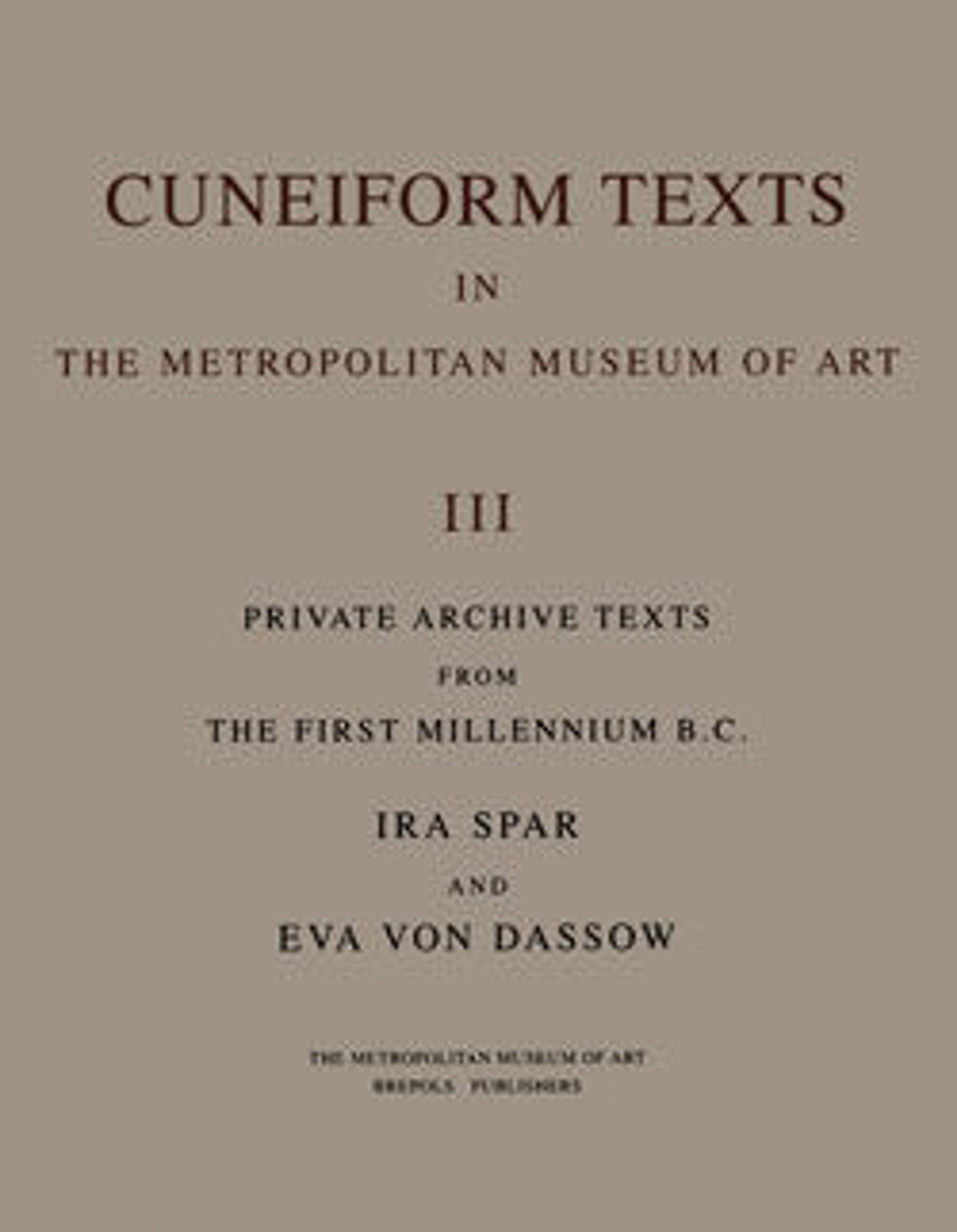Triangular label impressed with stamp seal: for grain loan
The invention of writing in approximately 3300 B.C. was one of many developments in administrative technology--including the use of geometric tokens for counting and cylinder seals to guarantee transactions--that accompanied the growth of the first cities and states in southern Mesopotamia. Proto-cuneiform is the name given to the earliest form of writing--pictograms that were drawn on clay tablets. Gradually, the pictograms became abstracted into cuneiform (Latin, "wedge-shaped") signs that were impressed rather than drawn. At its greatest extent, cuneiform writing was used from the Mediterranean coast of Syria to western Iran and from Hittite Anatolia to southern Mesopotamia. It was adapted to write at least fifteen different languages. The last dated cuneiform text has a date corresponding to A.D. 75, although the script probably continued in use over the next two centuries.
This clay object is a triangular-shaped label used to record a loan of grain. The cuneiform text which reads from left to right identifies the individuals involved, Shamash-sharru-usur and Ninurta-nadin-ahi, and also lists a number of witnesses. The label is impressed twice with a stamp seal with the design of a rosette. According to a caption the seal belonged to Ninurta-nadin-ahi, the man who received the advance of grain. Two counterclockwise whorls are incised between the stamped rosettes. They may represent either a type of countermark or perhaps a "signature" added by the scribe of the tablet.
The label was excavated at the site of Nimrud in northern Mesopotamia. It was part of the archive of a certain Shamash-sharru-usur, a high official who was active during the reign of the Assyrian king Ashurbanipal.
This clay object is a triangular-shaped label used to record a loan of grain. The cuneiform text which reads from left to right identifies the individuals involved, Shamash-sharru-usur and Ninurta-nadin-ahi, and also lists a number of witnesses. The label is impressed twice with a stamp seal with the design of a rosette. According to a caption the seal belonged to Ninurta-nadin-ahi, the man who received the advance of grain. Two counterclockwise whorls are incised between the stamped rosettes. They may represent either a type of countermark or perhaps a "signature" added by the scribe of the tablet.
The label was excavated at the site of Nimrud in northern Mesopotamia. It was part of the archive of a certain Shamash-sharru-usur, a high official who was active during the reign of the Assyrian king Ashurbanipal.
Artwork Details
- Title: Triangular label impressed with stamp seal: for grain loan
- Period: Neo-Assyrian
- Date: ca. 7th century BCE
- Geography: Mesopotamia, Nimrud (ancient Kalhu)
- Culture: Assyrian
- Medium: Clay
- Dimensions: 5.1 x 3.5 x 1.9 cm (2 x 1 3/8 x 3/4 in.)
- Credit Line: Rogers Fund, 1957
- Object Number: 57.27.23
- Curatorial Department: Ancient West Asian Art
More Artwork
Research Resources
The Met provides unparalleled resources for research and welcomes an international community of students and scholars. The Met's Open Access API is where creators and researchers can connect to the The Met collection. Open Access data and public domain images are available for unrestricted commercial and noncommercial use without permission or fee.
To request images under copyright and other restrictions, please use this Image Request form.
Feedback
We continue to research and examine historical and cultural context for objects in The Met collection. If you have comments or questions about this object record, please complete and submit this form. The Museum looks forward to receiving your comments.
